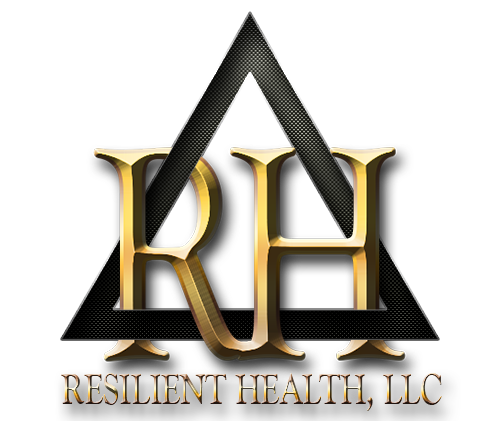Understanding Muscle Soreness: Why Recovery Matters as Much as Exercise
We've all experienced it — that dull, aching sensation in our muscles a day or two after an intense workout. This is known as Delayed Onset Muscle Soreness (DOMS), a natural part of the recovery process for anyone engaging in physical activity. While muscle soreness can be a sign of progress, understanding the science behind DOMS and implementing recovery strategies is crucial for long-term fitness success. Recovery is as vital as exercise itself, as it enables the body to rebuild and grow stronger, preventing injury and overtraining.
What Causes DOMS?
DOMS typically sets in 12 to 24 hours after exercise and peaks between 24 and 72 hours. It’s often associated with activities that involve eccentric contractions—where muscles lengthen under tension. For example, the lowering phase of a squat or the downward motion of a bicep curl places more stress on muscle fibers than concentric movements (shortening the muscle).
The microtears in the muscle fibers caused by eccentric movements lead to an inflammatory response in the body, triggering DOMS. When the muscle fibers tear, the immune system sends white blood cells and other substances to repair the damage, leading to inflammation, swelling, and soreness. This process is entirely normal and a key part of how muscles adapt and grow stronger.
Recovery Strategies to Alleviate DOMS and Rebuild Stronger
While DOMS is a sign that muscles are adapting to stress, managing soreness and promoting recovery will help you bounce back quicker and avoid overuse injuries. Here are the top science-backed strategies for optimizing recovery:
1. Active Rest
Engaging in active recovery—light movement like walking, swimming, or yoga—can stimulate blood flow to the sore muscles, bringing nutrients and oxygen necessary for repair while flushing out metabolic waste. Studies suggest that light exercise can reduce muscle soreness and improve recovery by increasing circulation without overloading the muscles further.
2. Stretching and Mobility Work
Dynamic stretching before workouts and static stretching afterward can help maintain flexibility, reduce muscle stiffness, and improve range of motion. Stretching promotes blood flow to the affected muscles and helps prevent tightness, which can exacerbate soreness. Mobility exercises like foam rolling can also alleviate tightness in fascia (the connective tissue around muscles), contributing to faster recovery.
3. Proper Nutrition for Muscle Repair
Recovery begins in the kitchen. After a workout, the body requires nutrients to repair muscle tissue and replenish energy stores. Consuming protein provides the amino acids necessary for muscle repair, while carbohydrates replenish glycogen (energy stores) depleted during exercise. A meal or snack containing a balance of protein and carbs within 30–60 minutes post-workout can accelerate recovery.
Additionally, certain micronutrients like omega-3 fatty acids (found in fish) have anti-inflammatory properties, helping to reduce muscle soreness and swelling. Antioxidant-rich foods such as berries, spinach, and nuts can also assist in reducing inflammation and oxidative stress following intense exercise.
4. Hydration
Muscles are more prone to soreness and cramping when dehydrated. Ensuring adequate fluid intake, particularly water and electrolyte-rich drinks, can help flush out toxins, reduce muscle cramping, and promote faster recovery. Hydration also plays a key role in maintaining muscle elasticity and preventing stiffness.
The Importance of Listening to Your Body
While it's tempting to push through soreness in the pursuit of progress, ignoring your body’s signals can lead to overtraining and injury. Overtraining occurs when muscles don’t get enough time to recover between workouts, leading to chronic soreness, fatigue, and reduced performance. Signs of overtraining include persistent muscle soreness, irritability, insomnia, and plateaued or regressed performance.
To avoid overtraining, periodize your workouts—rotate between intense, moderate, and light days, and incorporate rest days. Rest days are essential for allowing the muscle fibers to repair fully, which is when the actual strength gains occur. If soreness is severe, it's best to give your muscles extra time to heal before engaging in intense activity again.
The Role of Sleep in Recovery
Recovery doesn't just happen in the gym or at the dinner table—it happens while you sleep. Sleep is one of the most critical components of recovery because the body releases growth hormone during deep sleep, which stimulates muscle repair and growth. Aim for 7-9 hours of quality sleep per night to allow your body to recover fully.
Conclusion: Recovery Is Key to Progress
DOMS is a natural response to challenging workouts, but how you manage muscle soreness determines your ability to recover and grow stronger. Recovery strategies like active rest, proper nutrition, stretching, and adequate hydration all play pivotal roles in rebuilding muscle and preventing overtraining. Ultimately, listening to your body is the best way to ensure long-term progress. A well-balanced recovery routine will not only reduce muscle soreness but also enhance your performance in future workouts, keeping you on the path to achieving your fitness goals.
Remember, training is the catalyst that breaks down your muscles—but recovery is where the magic happens.
